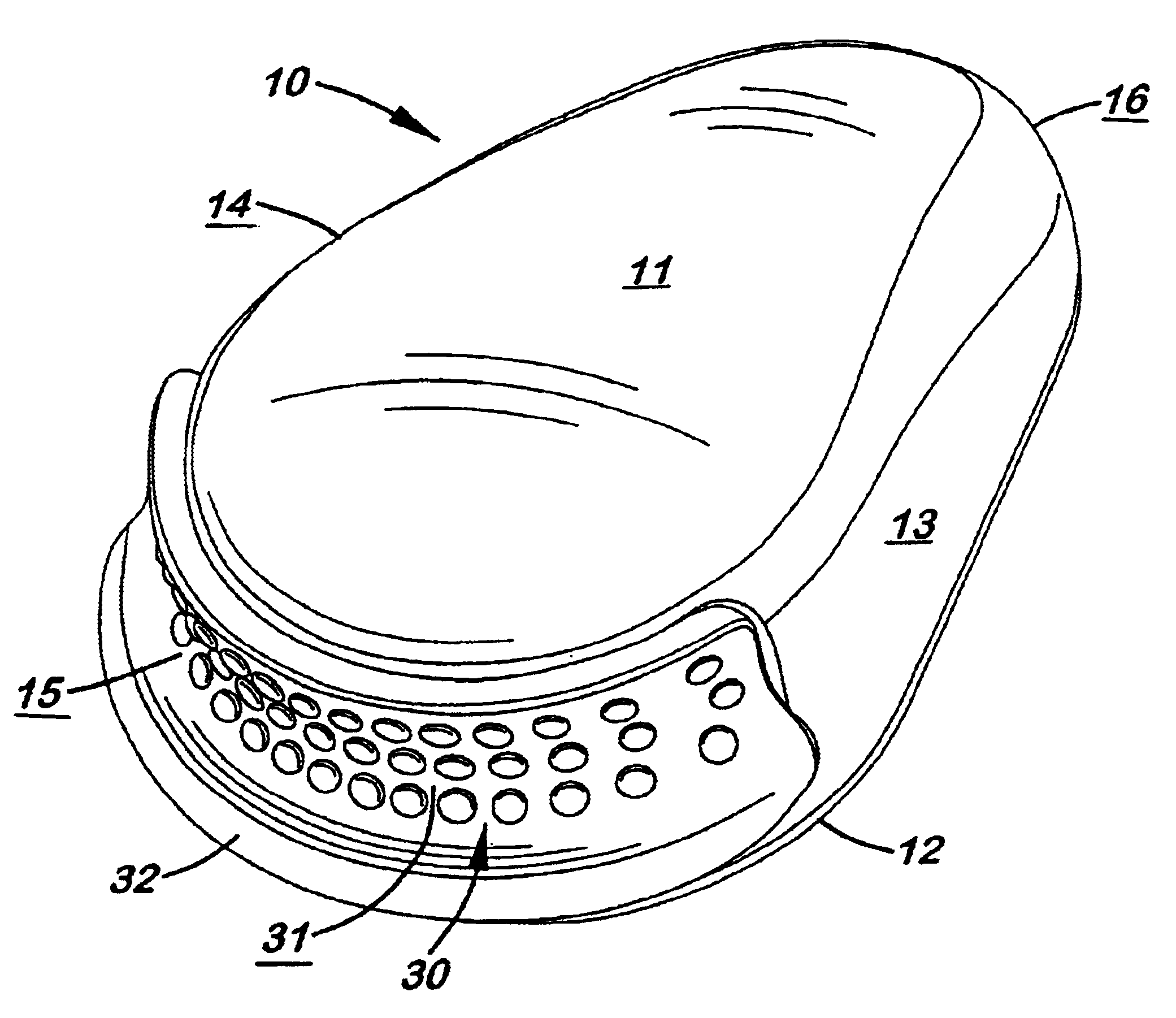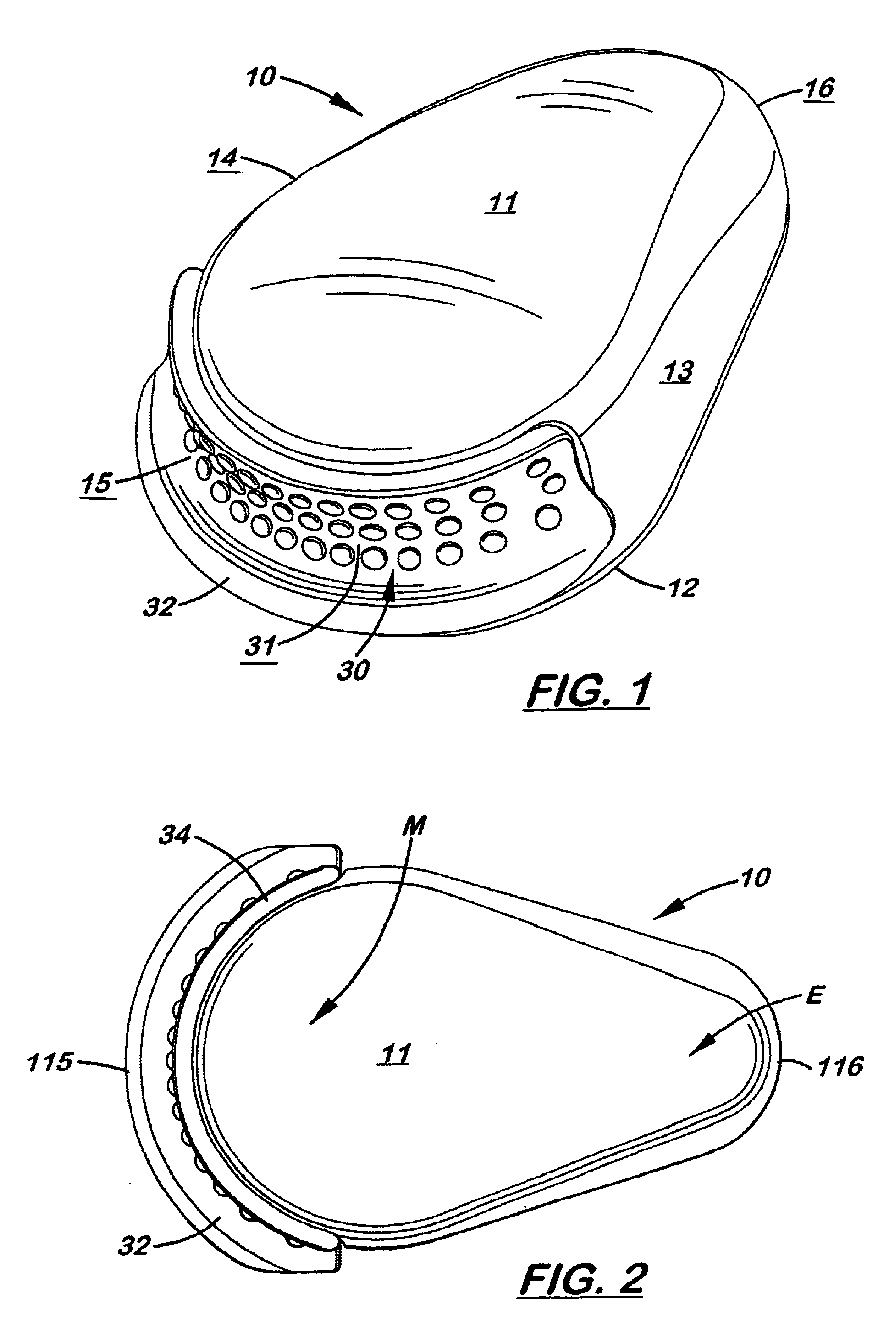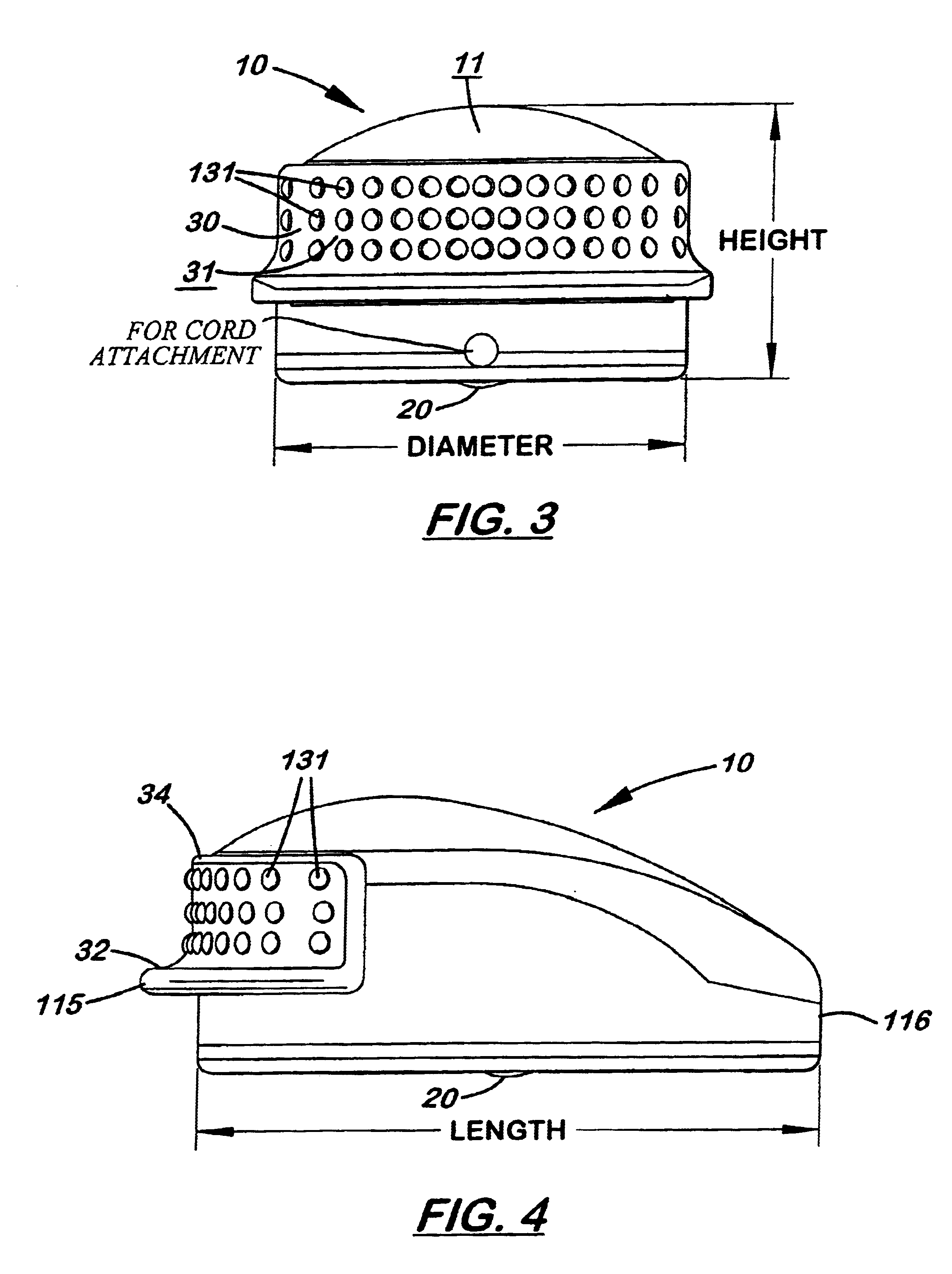Ergonomic computer mouse
a computer mouse and ergonomic technology, applied in the field of ergonomic computer mouse, can solve the problems of difficulty in satisfactorily controlling the mouse to the level of precision, the physiology and development of the hand of children's prior inventors, and the difficulty of releasing the buttons of conventional adult pointing devices, etc., to achieve the effect of high density, easy to grasp, and high weight per volum
- Summary
- Abstract
- Description
- Claims
- Application Information
AI Technical Summary
Benefits of technology
Problems solved by technology
Method used
Image
Examples
Embodiment Construction
[0044]Referring to the Figures, there are shown several, but not the only, embodiments of the invented ergonomic “mouse” computer pointing device. FIGS. 1-5 depict the preferred single button computer mouse for children according to the invention. This pointing device 1 includes housing 10 having top surface 11, bottom surface 12, left side surface 13, right side surface 14, front surface 15 and back surface 16. Rotatable ball 20 is provided in housing 10 and a portion of the ball extends downward from the bottom surface the housing.
[0045]By saying that a pointing mechanism (such as a rotatable ball) is “in the housing,” it is understood that the pointing mechanism may be inside or only partially inside the housing. Typically, the pointing mechanism will be mounting inside the housing and extend out from the bottom surface or another surface for interaction with a mouse pad, desk surface, user's hand, or other surface. The pointing means are operatively connected by cord, optical, o...
PUM
 Login to View More
Login to View More Abstract
Description
Claims
Application Information
 Login to View More
Login to View More - R&D
- Intellectual Property
- Life Sciences
- Materials
- Tech Scout
- Unparalleled Data Quality
- Higher Quality Content
- 60% Fewer Hallucinations
Browse by: Latest US Patents, China's latest patents, Technical Efficacy Thesaurus, Application Domain, Technology Topic, Popular Technical Reports.
© 2025 PatSnap. All rights reserved.Legal|Privacy policy|Modern Slavery Act Transparency Statement|Sitemap|About US| Contact US: help@patsnap.com



